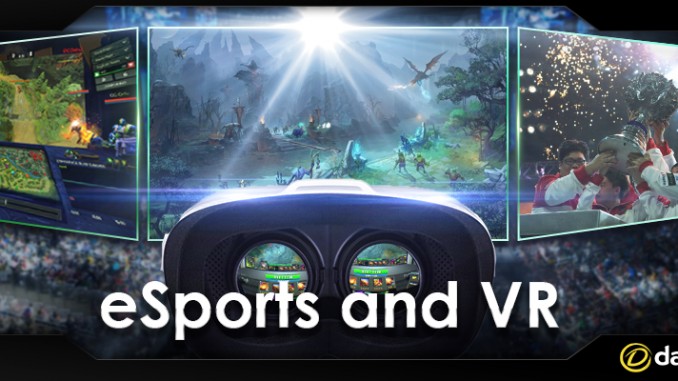
Esports and VR: A timeline
Timeline:
06/01/2016 – Virtuix hosts first Virtual Reality eSports tournament at CES – first-person shooter game Omni Arena.
- “Puts the sports into eSports” – players play on an actual treadmill in order to run around a virtual arena against their enemies
- 1v1, 1v2 game modes
- Over 100 players played in 30 minute sessions
- Looking to partner up with established eSports organizations such as ESL, Major League Gaming and ESWC
- Available since December 2015
26/04/2016 – Announcement that Project Arena is in development – has the potential for an eSports game
- Game similar to film Tron
- 1v1 mode where players throw virtual discs at each other with the aim of hitting their opponents and scoring. Players can dodge or block with a shield
- Uses Oculus Rift set
- Not yet released
15/05/2016 – Cyberpong VR – first online tournament streamed on Twitch
- First VR game that supports real-time match-making
- Tournament style matches
- Real-time match-making support
- Uses HTC set
27/07/2016 – Dota 2 VR Support Patch
- Valve introduce a VR spectator mode for The International 2016
- The VR addition allows users to browse the in-game menu in a simulated virtual environment
- Users can watch replays on a panel board in a simulated virtual room. The user can also jump onto the map and explore it from different angles during a match. Live matches can be watched too
- Social aspects heavily featured
- Uses HTC set
28/07/2016 – release of the first League of Legends VR video documentary made by Jaunt in cooperation with ESL about IEM Katowice 2016
24/08/2016 – Sliver.TV Beta launches
- VR Twitch.TV streaming alternative
- Raised $6.2 million from crowdfunding
- Uses a network of “virtual cameras” and records the entire 360-degree spherical environment
- “Auto Content” generation technology – searches and records live professional tournaments to build a database of matches, player statistics and ultimately tourneys
- “Hot Spot” algorithm – identifies highlight moments and sorts them into categories of replays, top plays and best moments
- “Special Effects” algorithm – uses slow motion, zoom-in effects and virtual cameras to capture the optimum viewing angle
- Supports Dota 2, League of Legends and CS:GO
03/09/2016 – Northern Arena eSports stream the game Clash Royale through Vantrix’s 360 streaming virtual reality set.
01/10/2016 – ESL One New York CS:GO tournament will be VR Streamed through Sliver.TV, becoming the first ever eSports event to be live-streamed in VR.
08/11/2016 – Northern Arena will use Vantrix VR technology for more titles at the 2016 Grand Finals – as well as Clash Royale, they will also include streaming of CS:GO and Hearthstone competitions.
There is no doubt that eSports, now an integral part of the gaming industry, will be at the forefront in the development and application of VR technology.
At this stage, VR is mostly aimed towards the spectating experience for the currently popular mainstream eSports such as Dota 2 and CS:GO. However, 3D modelling is a standard in video games nowadays and incorporation of VR is a starting point for developers so this may change.
The breakthrough technology does have the potential to create a brand new genre of eSports, entirely shaped by the VR platform. As with every new technological product just entering the market though, its accessibility makes it a bit out of reach for the average gamer at this time but with the price of the technology likely to come down, it could become big over the course of the next few years.
Gameplay seems to be the biggest challenge to overcome at this stage. eSports are quite intense and dynamic, with some of them relying on split second decision making. Therefore all that is needed is a good computer configuration and a suitable keyboard and mouse. VR could fundamentally change that, but successfully substituting those classical means for the most popular eSports disciplines such as League of Legends and CS:GO seems far into the future currently.
Time will tell whether VR will fundamentally change the eSports scene or just adjust it, but one thing is certain; it is the future of gaming and the future of eSports, even if it just takes off for spectators rather than the players themselves.









